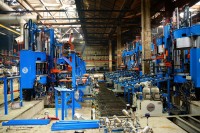Kwik Fit: WLTP will influence wheel and tyre choice
The method of determining company car tax in the UK will change in April 2020 when the government switches over to the World Light-duty Test Procedure (WLTP) for measuring CO2 emissions, and Kwik-Fit suggests that the adoption of the WLTP could lead to larger diameter rim and tyre sizes falling out of favour.
WLTP takes into account all available options, thus making variation in CO2 levels – and therefore company car benefit-in-kind tax rates and all other motoring-related taxes – vast and significantly more visible. The size of vehicle wheels and tyres strongly influence vehicle CO2 and MPG performance.
In recent years there has been a trend by car makers to fit larger wheels to models, and ‘must have’ company car extras often include larger rim size options. Kwik-Fit notes that tyre choice has increased by around ten per cent a year over the past two decades: In 1997, 19 tyre sizes accounted for up to 90 per cent of company car tyre fitments; today, 120 tyre sizes account for 90 per cent of fitment, with the remaining ten per cent covering 1,030 sizes.
“Wheel rim size and width of a tyre have a direct correlation on a vehicle’s rolling resistance and therefore CO2 emissions,” comments Andy Fern, Kwik Fit GB fleet sales director. “As a result, we may see vehicle manufacturers end the trend for larger wheels, or company car drivers may think twice about ticking the larger rim size option when specifying a vehicle as it will ultimately hit them in the pocket.”
Fern also opines that we may see a reverse in company car driver migration to SUVs – significantly higher WLTP-based emission figures will widen the gap between these vehicles and hatchbacks and saloons.
“Businesses like certainty to make investment decisions. But fleet uncertainty exists as manufacturers’ review and change vehicle line-ups, equipment levels and option choices influenced by WLTP CO2 figures and the industry waits for the government to announce its motoring tax plans, and specifically the company car benefit-in-kind tax regime. Post-2020 and fleet and company car drivers’ choice of vehicles and wheel and tyre configurations may be very different from today,” Fern concludes.




Comments